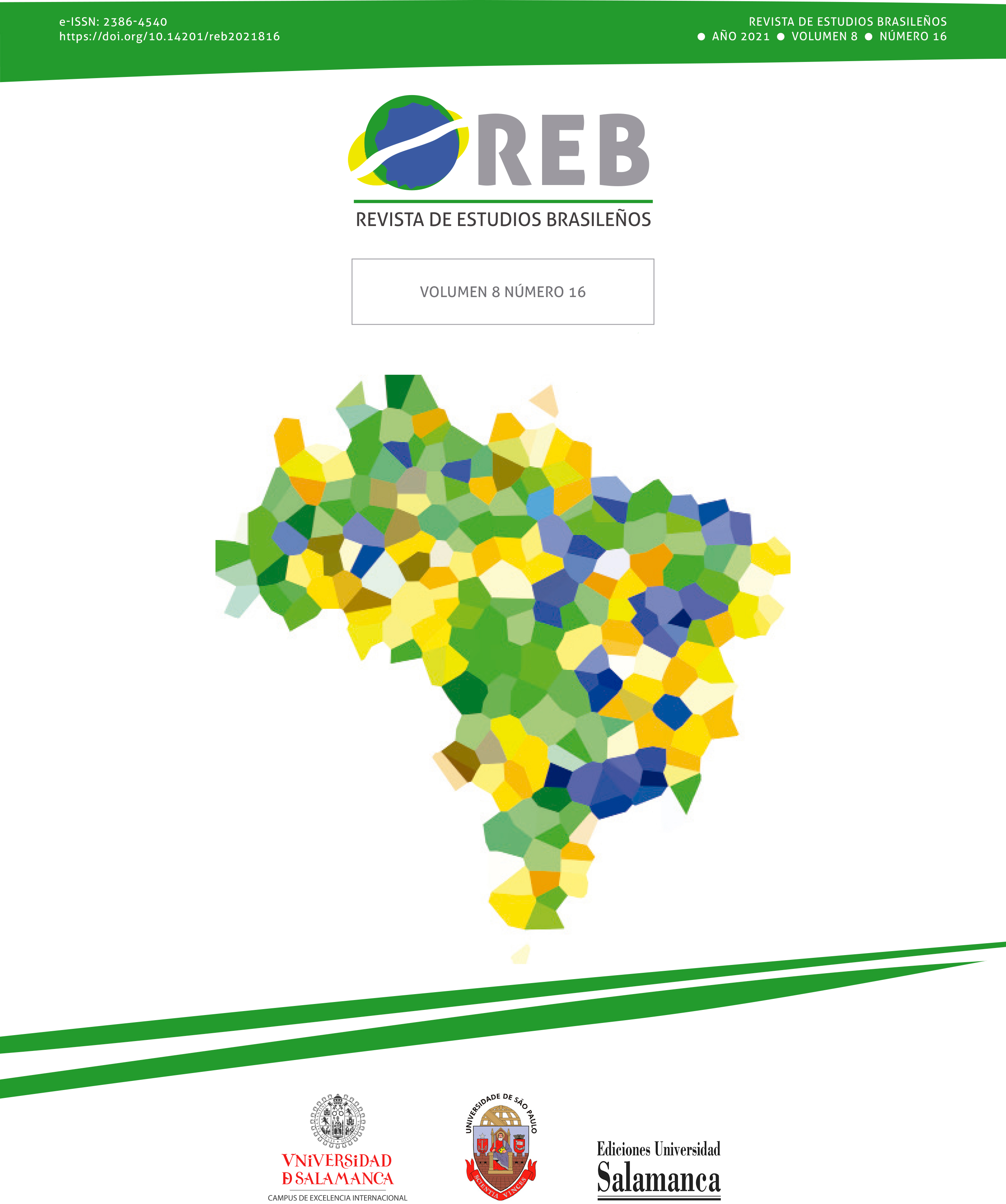Culture in our hands: semantic bridges between indigenous and western society in the era of projects
DOI:
https://doi.org/10.14201/reb20218165568Keywords:
Culture, projects, shamanism, ethnicityAbstract
The Katukina (Noke Koi) people have their territory within the state of Acre in Brazil. Their first contact with Western society was in the late XIX century, when migrants traveled through the Amazon basin in search of rubber trees. Since then, they have been in permanent contact, first helping the rubber tappers and bosses as guides, hunters, and in the production of rubber. The recent success of neighboring peoples in obtaining resources from NGO projects has awakened in the leaders’ the interest of doing something similar and thus promoting through “culture” the entry of resources in their land. This article describes the collaboration between the anthropologist and the Noke Koi in the founding of an association and its development contextualized by the strengthening of indigenous peoples and their associations in the Amazon. From the ethnographic encounter we will be able to analyze the complexity of the relations between the Katukina and the surrounding society as well as what our interlocutors really seek when engaging in these emerging activities.
Downloads
References
Albert, B., & Kopenawa, D. (2015). A queda do céu: palavras de um xamã Yanomami. São Paulo: Companhia das Letras.
Bomfim Neto, V. (2016). Renascimento cultural amazônico: Relações interétnicas e revitalização cultural entre os Yawanawa. Masters’ dissertation, Universidade Federal de Pernambuco, Recife, Pernambuco, Brazil.
Carid Naveira, M. (1999). Yawanawa: da guerra a festa. Masters’ dissertation, Universidade Federal de Santa Catarina, Florianópolis, Santa Catarina, Brazil.
Carneiro Da Cunha, M. (1998). Pontos de vista sobre a floresta amazônica: xamanismo e tradução. Mana, 4(1), 7-22.
Carneiro Da Cunha, M. (2009). Cultura com aspas. São Paulo: Cosac Naify.
Freire, P. (1989). Educação como prática da liberdade. São Paulo: Paz e Terra.
Gow, P. (1996). River people: shamanism and history in western Amazonia. In N. Thomas, & C. Humphrey (Eds.). Shamanism, history and the state (pp. 90-113). Ann Arbor: The University of Michigan Press.
Iglesias, M. P. (2008). Os Kaxinawá de Felizardo: correrias, trabalho e civilização no Alto Juruá. PhD thesis, Universidade Federal do Rio de Janeiro, Rio de Janeiro, Rio de Janeiro, Brazil.
Labate, B., & Cavnar, C. (2014). Ayahuasca shamanism in the Amazon and beyond. New York: Oxford University Press.
Lagrou, E. J. (2018). Anaconda-becoming: Huni Kuin image-songs, an Amerindian relational aesthetics. Horizontes Antropológicos, nº 51, 17-49.
Langdon, E. J. (2006). Shamans and shamanisms: reflections on anthropological dilemmas of modernity. Vibrant, 4(2), 27-48.
Langdon, E. J. (Org.). (1996). Xamanismo no Brasil: novas perspectivas. Florianópolis: UFSC.
Langdon, E. J.(2012). Redes xamânicas, curanderismo e processos interétnicos: uma análise comparativa. Mediações, 17(1), 62-82.
Lima, E. C. (2000). Com os olhos da serpente: homens, animais e espíritos nas concepções Katukina sobre a natureza. PhD thesis, Universidade de São Paulo, São Paulo, São Paulo, Brazil.
Losonczy, A., & Mesturini, S. (2010). La selva viajera. Rutas del Chamanismo Ayahuasquero entre Europa y América. Religião e Sociedade, Rio de Janeiro, 30(2),164-183.
Luna, L. E., & White, S. F. (2016). Ayahuasca Reader. Encounters with the Amazon’s sacred Vine. Santa Fé: Synergetic press.
Mccallum, C. (1996). The Body that Knows: From Cashinahua epistemology to a medical anthropology of Lowland South America. Medical Anthropology Quarterly, nº 10, 347 -372.
Perez-Gil, L. (1999) Pelos caminhos do Yuve: conhecimento, cura e poder no xamanismo Yawanawa. Masters’ dissertation, Universidade Federal de Santa Catarina, Florianópolis, Santa Catarina, Brazil.
Ramos, A. R. (2018). Desenvolvimento rima com encantamento. Maloca Revista de estudos indígenas, 1(1). 28-52.
Sahlins, M. (1997). O “pessimismo sentimental” e a experiência etnográfica: por que a cultura não é um “objeto” em via de extinção (parte I). Mana, 3(1), 41-73.
Sahlins, M. (1997). O “pessimismo sentimental” e a experiência etnográfica: por que a cultura não é um “objeto” em via de extinção (parte II). Mana, 3(2). 103-150.
Sahlins, M. (1999). Two or three things That I know about Culture. The Journal of the Royal Anthropological Institute, 5(3), 399-421.
Seeger, A.; Matta, R. & Viveiros de Castro, E. (1979). A construção da pessoa nas sociedades indígenas brasileiras. Boletim do Museu Nacional, Série Antropologia, nº 32, 2-19.
Shepard, G. (2014). Will the real shaman please stand up? The recent adoption of Ayahuasca Among Indigenous Groups in the Peruvian Amazon. In B. C. Labate, & C. Cavnar (Eds.). Ayahuasca shamanism in the Amazon and beyond (pp. 16-39). New York: Oxford University.
Vilaça, A. (2000). O quê significa tornar-se outro? Xamanismo e contato interétnico na Amazônia. Revista Brasileira de Ciências Sociais, 15(44), 56-72.
Viveiros De Castro, E. (2002). A inconstância da alma selvagem. São Paulo: Cosac Naify.
Wagner, R. (1975). The invention of culture. Chicago, IL: University of Chicago Press.
Downloads
Published
Issue
Section
License
Copyright (c) 2021 Virgilio Bomfim Neto

This work is licensed under a Creative Commons Attribution-NonCommercial-NoDerivatives 4.0 International License.


